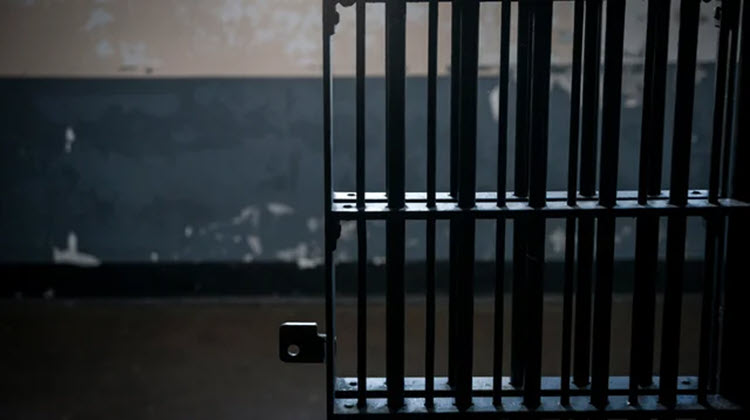

By Macy Lu and Cailin Garcia
WASHINGTON, D.C. — The Sentencing Project released a new report titled “Incarcerated Women and Girls” just before Thanksgiving that revealed, among other concerns, that the female incarcerated population currently stands more than seven times higher than in 1980.
The Sentencing Project, a 34-year old Washington, D.C. based research and advocacy center that studies mass incarceration and racial disparities in the criminal justice system by conducting and publishing research, explored in this study race and ethnicity of female prison populations, variations in state prison populations, offense types by gender, and incarcerated female youth.
The Sentencing Project found that between 1980 and 2019, the number of incarcerated women increased by more than 700 percent, rising from a total of 26,378 in 1980 to 222,455 in 2019.
Though there are still many more men in prison than women, the rate of growth for female imprisonment has been twice as high as that of men since 1980. Currently, a total of 1.2 million women are under the supervision of the U.S. criminal justice system.
According to the Sentencing Project, the increase in incarcerated women has come as a result of more expansive law enforcement efforts, stricter sentencing laws, and post-conviction barriers to re-entry that uniquely affect women over the past quarter century.
The study found concerning racial disparities in the female prison population. In 2019, the imprisonment rate for Black women was more than 1.7 times the rate of imprisonment for white women.  Latinx women were imprisoned at 1.3 times the rate of white women.
Latinx women were imprisoned at 1.3 times the rate of white women.
While imprisonment rates of Black women have declined by 60 percent since 2000, they have increased for white and Latinx women. The rate of imprisonment of white women has risen by 41 percent and the rate for Latinx women has risen by five percent, according to the study.
Incarceration rates for women vary from state to state. The study found that “at the national level, 61 out of every 100,000 women were in prison in 2019.” Idaho has around 138 out of every 100,000 women in prison, making it the state with the highest female incarceration rate in the nation.
On the other end of the spectrum, Massachusetts has the lowest rate of female imprisonment, with only 10 out of every 100,000 women in prison.
Incarceration rates between men and women differ depending on offense type.
According to the study, “Women in state prisons are more likely than men to be incarcerated for a drug or property offense.” Twenty-six percent of women in prison “have been convicted of a drug offense” versus only 13 percent of men in prison. 24 percent of incarcerated women “have been convicted of a property crime” versus only 16 percent of men.
When it comes to violent crimes, the proportion of men convicted—58 percent—significantly exceed the proportion of women convicted—38 percent.
The study included patterns regarding the incarceration and arrests of youth girls under the umbrella of female incarceration rates. From 1990 to 2018, the arrest rate for girls has jumped from 20 percent of arrested youths to 30 percent.
Of the 43,580 youth actually incarcerated, 15 percent (6,598) are girls—a figure that has been cut by more than half from 15,104 since 2001; however, they make up 36 percent of “those incarcerated for the lowest level offenses…(such as truancy and curfew violations).” They also make up more than 50 percent of youths “incarcerated for running away.”
Race is another important factor affecting the incarceration rate of youth girls, with African-American and Native American girls “much more likely to be incarcerated than Asian, white, and Hispanic girls.”
For every 100,000 girls between the ages of 10 and 17 in the country, 43 are incarcerated. Among Asian girls, only “3 per 100,000” are incarcerated, among white girls that figure is 29 per 100,000, and among Hispanic girls, it is 31 per 100,000.
On the other hand the incarceration rate for African-American girls is three times that of their white peers at 94 per 100,000. For Native American girls, it is more than four times higher at 123 per 100,000.
The full fact sheet, including detailed graphs and charts of the statistics, is available for public download on the Sentencing Project’s website: www.sentencingproject.org.
 Macy is a junior from Orange County, CA studying Communications and English at UC Davis. She loves meeting people, reading books, and writing
Macy is a junior from Orange County, CA studying Communications and English at UC Davis. She loves meeting people, reading books, and writing  creatively.
creatively.
Cailin Garcia is a senior at UCLA, majoring in sociology with a minor in professional writing. She is from Santa Clarita, California.
To sign up for our new newsletter – Everyday Injustice – https://tinyurl.com/yyultcf9
Support our work – to become a sustaining at $5 – $10- $25 per month hit the link: